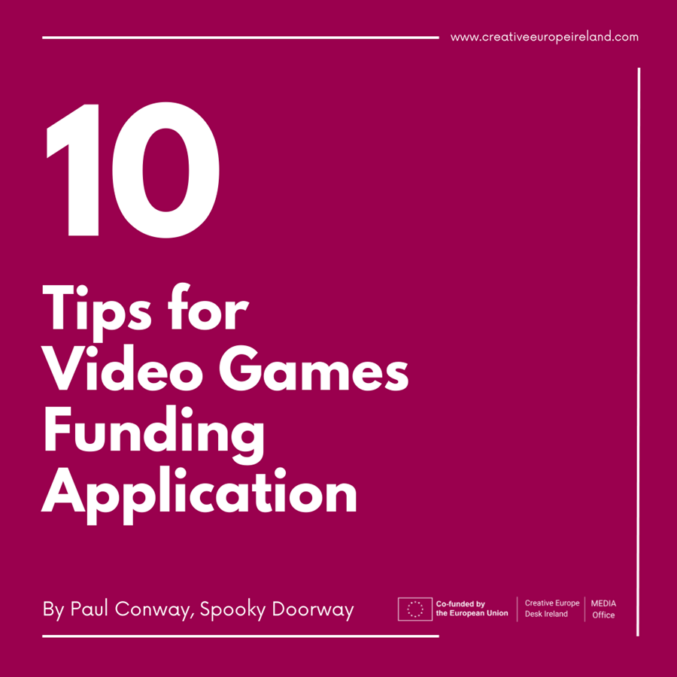
10 tipov pre podávanie žiadosti vo výzve Video Games & Immersive Content
Deadline: Video Games & Immersive Content – 12. februára 2025
Pracujete na žiadosti programu Kreatívna Európa – Video Games and Immersive Content? Prečítajte si desať užitočných tipov od Paula Conwaya zo štúdia Spooky Doorway, ktoré vám pomôžu zorientovať sa v procese a zlepšiť kvalitu vašej žiadosti.
Spooky Doorway / Isometric Dreams je írské herné štúdio a úspešný prijímateľ podpory z predchádzajúcich výziev na financovanie videohier. Ich videohra Eldritch House získala podporu z fondu MEDIA a je to nadprirodzená detektívka inšpirovaná írskou mytológiou.
The objective of Video Games & Immersive Content funding is to increase the capacity of European video game producers, XR studios and audiovisual production companies to develop video games and interactive immersive experiences with the potential to reach global audiences. The support also aims to improve the competitiveness of the European video games industry and other companies producing interactive immersive content in European and international markets by enabling the retention of intellectual property by European developers.
10 Tips for Games & Immersive Content Funding Applications
1. Allow Time To Do The Application
There is a lot of detail required. Don’t expect to do it in a weekend
We take 2 weeks on average: 1 week for creative info and game design doc and 1 week for application and budget
Aim to submit before the deadline. If things go wrong, you’ll have time to figure it out!
2. Reach out to Creative Europe MEDIA Office
If you get overwhelmed or confused contact the Creative Europe Media Desks.
They can help you figure it out, review content, steer you in the right direction.
3. Your Budget Should Be Realistic
Remember your budget is for a demo, not a full game
Budget for the game you’re actually making
Make sure you’re considering all the costs: Music, SF, Voice Acting, UI / UX, Art, Marketing, Event Travel etc.
Do you need to apply for the full amount?
Can you cover the 40% of the expenses you need to provide?
4. Show A Realistic Development Timeline
Create a realistic timeline of what you’re going to do and when.
It will change as you make the game, but it shows you’ll have considered the development in detail.
Professional developers will be reviewing your work. They will know if you’re underestimating the time needed.
If it’s not a reasonable timeline, then your budget will come under more scrutiny.
5. Treat Your Creative Dossier Like A Pitch
Make a PowerPoint style document that flows well and is easy to read.
Invest in good art. It’s competitive. Do your best to stand out!
Mock up screenshots as well as concept art.
Do NOT use AI Art! It suggests you cannot make this game.
Think of the application reviewers as publishers. What do you need them to see or understand quickly?
What’s your hook? What makes your game special. Don’t hide it in the Game Design Document or the Part-B document.
6. Humanise Your Team
Add a slide showing the people who are making the game. (If you already have a team in place).
It doesn’t matter if it’s a small team or you’re a solo dev. People make games!
Show your achievements if you can.
Explain why you want to make the game.
7. Provide A Detailed Game Design Document
You need to be able to demonstrate that you’ve really thought your game through.
This document lets you explore the story and mechanics in detail.
It will show the scope of your vision and where the money is going.
It will communicate anything you were unclear about in the application or pitch.
You’ll need this for a publisher anyway.
8. Show Your Market Research And Strategy
9. Get Help With The Writing (If You Need It)
10. Try To Get Some Supporting Documents
